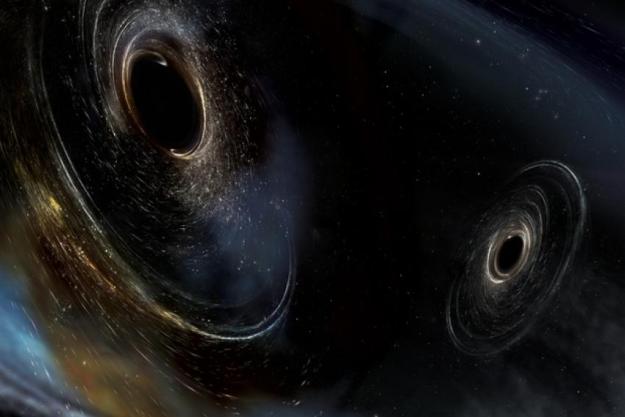Astronomers have discovered the closest black hole to Earth ever found, located just 1,000 light-years away.
It is part of an unusual triple system called HR 6819, consisting of two stars and a black hole all orbiting the same point, according to research published in the journal Astronomy & Astrophysics.
Black holes absorb everything that comes close to them, even light, so it is essentially impossible to observe one directly. In this case, the astronomers with the European Southern Observatory (ESO) were able to locate the black hole using the MPG/ESO 2.2-meter telescope at the La Silla Observatory in Chile to look at the movements of one of the other stars in the system.

“The main effect this black hole has is the gravitational pull on the companion star,” Dietrich Baade, ESO’s Emeritus Astronomer, told Digital Trends. “The companion star is visible to the naked eye, so it’s quite easy to take high-resolution and high-quality spectra, and to measure from the Doppler shift the rate of velocity of the star.”
The Doppler shift is the phenomenon where the frequency of waves appears to change due to motion between the source and the observer — like how a siren sounds different when an ambulance approaches and then drives away.
Using this shift, the researchers saw how the star was moving and inferred the presence of a black hole.
“If the star is moving around, there must be a reason for that,” Baade explained. “And since stars interact only gravitationally, at least at that level, there must be a big mass nearby. And if one cannot see that mass, and the mass is above a certain level, then it must be a black hole.”
Using the observations, the researchers were able to calculate that the object in the HR 6819 system has a mass about five times that of our sun, or about 1.5 million times that of the Earth, indicating that it must be a black hole.
The system is also notable for an unusual feature, being a triple system in which two stars and one black hole orbit around the same center of mass.

“This triple system is a type called a hierarchical system, which means that two of the objects are very close to each other and the third object is rather far away,” Baade said.
“In the inner binary, there is a luminous star which is bright enough to be seen with the naked eye, which is orbited by the black hole. And then these two stars, in turn, are orbited by a second luminous star which is further away.”
The black hole’s triple system could help astronomers study elusive gravitational waves in the future. The system itself is not likely to be a source of these waves, but what it does provide is a model of what a system with two black holes orbiting each other might look like.

When two binary black holes merge, the tremendous amount of energy this event gives off creates a dramatic distortion of space. This distortion would be one of the strongest sources of gravitational waves in the universe, and would be detectable through projects like LIGO (Laser Interferometer Gravitational-Wave Observatory).
But astronomers aren’t sure what would cause a binary pair of black holes to merge. One suggestion is that the mergers could be caused by a third star orbiting the pair.
By studying the movement of the two stars and one black hole in the HR 6819 system, astronomers can build up a blueprint of triple systems that could teach them about how these binary black hole mergers could occur.
Baade said he’s been studying this particular system on and off for 20 years.
While Baade said the researchers were thrilled to finally nail down the system’s unique composition, it was a bittersweet victory: The team’s leader, Stan Štefl died in a car accident in 2014 before their findings could be published.
“It was very rewarding to bring it to this positive and conclusive end,” Baade said. “But it’s of course very sad that our friend Stan Štefl could not celebrate the success with us.”
Editors' Recommendations
- Stunning image shows the magnetic fields of our galaxy’s supermassive black hole
- Astronomers discover a super-Earth located in the habitable zone
- Astronomers discover extremely hot exoplanet with ‘lava hemisphere’
- Record-breaking supermassive black hole is oldest even seen in X-rays
- This peculiar galaxy has two supermassive black holes at its heart




